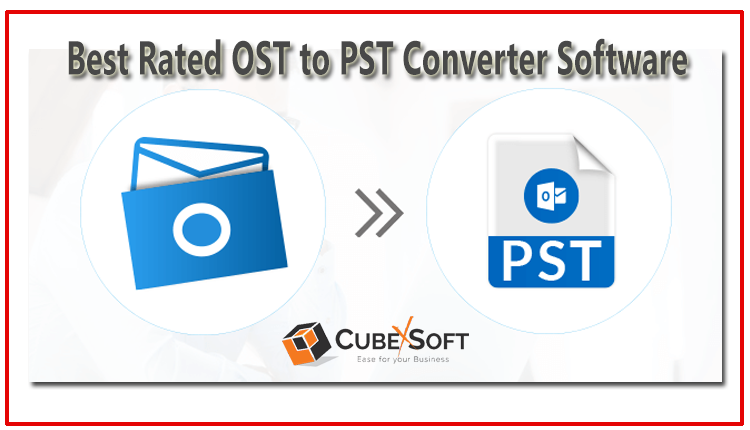
Microsoft Outlook’s Offline Storage Table (OST) files are essential for accessing emails offline and synchronizing changes with the Exchange server once online. However, directly viewing the contents of an OST file can be challenging because these files are designed for offline use and are not meant to be accessed independently like Personal Storage Table (PST) files. Here’s a comprehensive guide on how to view offline OST file in Outlook effectively.
Understanding OST Files
OST files are cached copies of your Exchange mailbox stored on your local computer. They allow you to work offline and sync changes with the server when connected. By default, Outlook uses OST files for Exchange accounts configured in Cached Exchange Mode.
Why View OST Files?
- Offline Access: OST files enable you to access your emails, contacts, and calendar items even when you are not connected to the internet.
- Backup and Recovery: Viewing OST files can help in recovering data if there are issues with the Exchange server or mailbox corruption.
- Archiving: Viewing OST files can aid in archiving or exporting specific mailbox data to another format.
Methods to View OST File in Outlook
To view the contents of an OST file, you typically need to re-connect it to Outlook or convert it to a PST file. Here are the steps involved in each method:
Method 1: Reconnecting OST File to Outlook
Ensure Connectivity: Open Outlook and ensure that you are connected to the Exchange server.
Import OST File:
- Navigate to File > Open & Export > Open Outlook Data File.
- Browse and select the OST file you want to view.
- Click Open.
- Outlook will attempt to synchronize and display the contents of the OST file. Any changes made will sync with the Exchange server once connected.
Method 2: Converting OST File to PST Format
Use CubexSoft OST to PST Converter Tool:
CubexSoft OST Converter is a specialized software designed for Mac & Windows users to convert OST files into PST format. This tool is particularly useful for individuals or organizations using Outlook who need to access or migrate their data from OST files, which are typically used for offline access in Outlook with Exchange accounts.
OST Converter is a valuable tool for Windows & Mac users who need to convert OST files to PST format, providing a straightforward solution to access, manage, and migrate Outlook data across different platforms. With its user-friendly interface, batch conversion capabilities, and comprehensive data integrity preservation, OST Converter offers a reliable solution for handling OST files on macOS & Windows efficiently.
Guide to Import Outlook OST File to PST with Software
- Download and install a reliable OST to PST Converter tool on your PC
- Run the tool and select the OST file you want to convert by clicking on Select Files/Folders button.
- Now preview of all selected OST files in software panel. Select desired files that you want to convert and click on Saving Options.
- Choose PST as the output format and initiate the conversion process.
Open PST File in Outlook:
- Once the OST file is converted to PST, you can open it in Outlook.
- Navigate to File > Open & Export > Open Outlook Data File.
- Browse and select the PST file.
- Click Open to view the contents of the PST file in Outlook.
Tips for Viewing OST Files
- Backup Original OST: Before attempting any operations on OST files, make sure to back up the original OST file to prevent data loss or corruption.
- Use Reliable Tools: When converting OST to PST, use trusted software to ensure data integrity and avoid potential security risks.
- Understand Limitations: Remember that directly accessing or manipulating OST files outside of Outlook’s environment can be complex and is generally not recommended without proper tools or expertise.
Benefits of Using CubexSoft OST to PST Converter
- Batch Conversion: Supports batch conversion of multiple OST files, enabling users to process large volumes of data simultaneously, saving time and effort.
- Preview Feature: Provides a preview of OST file contents before conversion, allowing users to verify and select specific items for conversion, ensuring accuracy and completeness.
- Maintains Data Integrity: Ensures that all email properties, such as attachments, metadata, folder structure, and formatting, are preserved during the conversion process, maintaining data integrity.
- Simple User Interface: Designed with an intuitive and user-friendly interface, making it accessible for both novice and advanced users without requiring technical expertise.
- Compatibility: Compatible with various versions of macOS & Windows, ensuring broad compatibility across different Mac systems and environments.
Conclusion
While OST files are primarily meant for offline access and synchronization with Exchange servers, viewing their contents directly in Outlook or converting them to PST format provides flexibility in managing and accessing mailbox data. By following the methods outlined in this guide, you can effectively view and utilize OST files according to your needs, ensuring seamless integration and accessibility of your email data.